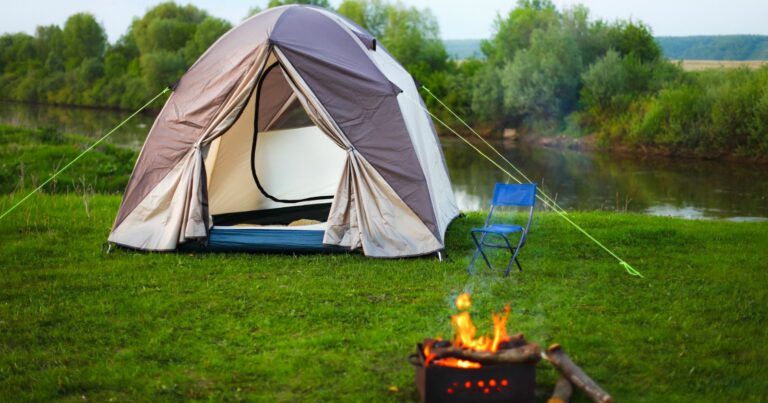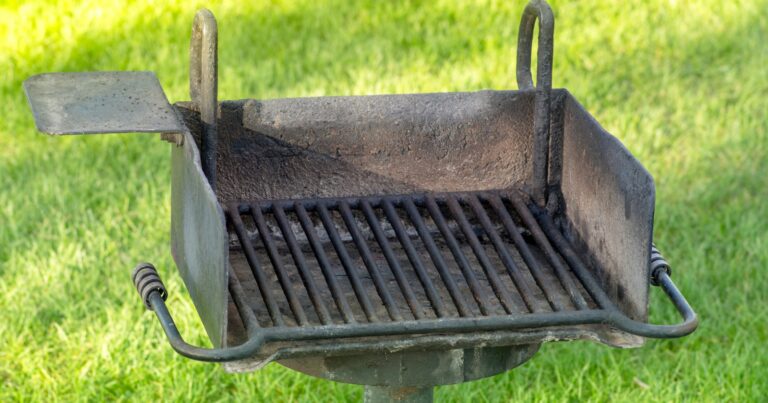How to Hang Your Hammock Perfectly Using Straps for Maximum Comfort
Nothing beats swaying between two trees in a comfy hammock after a long day on the trail. But getting your hammock hung and positioned just right can be frustrating, especially if you’re missing the right gear. Avoid struggling to get a proper hang by using wide straps designed to protect trees and simplify the setup process. With the right technique, you’ll be relaxing among the treetops in minutes!
Trying to tie rope directly around trees can damage bark and leave you wrestling to get a secure hold. And stringing up your hammock too high or low makes for an uncomfortable rest. But quality hammock straps take the guesswork out of getting that perfect hang every time. Their daisy chain design lets you customize the height easily without any rope burn.
The key is finding two well-spaced, sturdy trees to anchor your straps. Then it just takes a few adjustments to dial in the right positioning. In no time you’ll be swaying breezily above the ground, nestled into your cozy nylon cocoon. Keep reading to learn how proper straps paired with a few simple steps give you the key to hammock hanging success. Soon you’ll be an expert at setting up the ultimate campsite chill zone. Time to get swinging!
Choose An Ideal Location Between Two Trees
Your first step is finding suitable trees to serve as sturdy anchors. Look for these traits:
- 10-15 feet apart: This allows optimal hammock hang angle for stability.
- Alive and healthy: Avoid dead/rotting trees that may topple under weight.
- Minimal branches/obstructions between: Allows a clear hang.
- Diameter over 12 inches: Provides strength to bear your weight.
- Away from ant mounds or poison ivy: Prevent unpleasant surprises!
Survey the site to ensure no harmful surfaces below like rocks or thorns. A clear, safe space is vital.
Protect Trees and Simplify Setup with Straps
Regular rope can strip bark and damage tree trunks over time. But straps disperse pressure, preventing harm. Their daisy chain design also enables easy height adjustments. Look for these features when selecting straps:
- Heavy duty polyester or nylon material
- At least 1 inch wide to distribute weight
- Loops sewn along length for customizing height
- Lightweight with compact pack size
- Includes carabiners for easy set up
- Minimum 10 feet long (extend length as needed)
Using proper straps is a hammock-hanging game changer!
Wrap Straps Securely Around Trees
With your straps and trees selected, it’s go time. Follow these steps:
- Take one strap end and wrap it around the first tree about 5-6 feet up from the ground.
- Pass the end with the carabiner through the strap’s last loop and tightly pull to secure.
- On the second tree, repeat wrapping the strap around at the same height and threading through the loop.
The goal is firmly cinching the straps without excessive slack. Wrap higher for more tautness or lower to loosen.
Clip In Hammock and Adjust to Perfection
Now comes everyone’s favorite part – actually hanging the hammock!
- Clip carabiners on both hammock ends into the corresponding strap loops.
- Gradually shift straps up or down to find your perfect height preference.
- Test by lying in the hammock with your knees slightly bent and angle of recline around 30 degrees.
- Tweak the height until you feel fully supported in a zero-gravity floating position.
Use the daisy chain’s flexibility until your hammock is dialed in just right.
Hang a Ridge Line for Proper Slope
A ridge line running down the middle ensures an ideal hang angle for full-body support. Here’s how to add one:
- Tie rope/cord between the two tree anchor points.
- Adjust until rope has ~30 degree angle (use protractor phone app to check).
- Weave ridge line through a sleeve or carabiner on the hammock center.
This trick can be done after getting in the hammock to optimize recline angle too.
Add a Structural Ridgeline for Consistency
A structural ridgeline ensures the exact same perfect hang every time:
- Use low-stretch rope with bowline knots tied to the tree anchors.
- Set a 30 degree angle. The fixed length always replicates it.
- Attach hammock carabiners to the ridgeline’s center point.
No more fiddling to find that sweet spot over and over again!
Use Tree Straps for Protection
Tree straps are another option offering padding and adjustable length:
- Wrap strap around tree trunk starting about 4 feet high.
- Thread non-looped end through metal ring and pull tight.
- Use ring to attach carabiner and hammock.
The material protects bark while the sliding design makes height changes simple.
Hang Legally on Public Lands
Before stringing up your hammock on public property:
- Call the managing agency to ask about regulations.
- Obtain permits if required. Leave No Trace principles always apply.
- Use hammock-friendly anchors like walls, posts, or rock formations if trees are prohibited.
- Take photos to document the hang location and lack of impact after use.
Working cooperatively with land managers ensures continued access for everyone’s enjoyment.
Master the Perfect Hang to Maximize Comfort
Achieving that elusive “laying on air” feel is the ultimate goal each time you hang your hammock. Keep these comfort tips in mind:
Get the right height
Too high and your knees will hyperextend. Too low causes shoulder squeeze. Adjust to find that sweet spot.
Use a slight recline
Laying totally flat puts strain on your back. A 30 degree recline keeps your body aligned.
Hang at an angle
Get diagonal instead of straight across for ergonomic support. Aim for 30 degrees from the anchors.
Don’t cinch too tight
Allow some slack for your body to sink into a cradled position.
Add insulation underneath
Use a sleeping pad to stop cold air flow and insulate on chilly nights.
Gear and Upgrades for Ultimate Hammock Relaxation
Enhance your hangout with these bonuses:
Hammock tarp – Create shade and protect from rain or falling debris. Essential in many climates.
Spreader bars – Keep the fabric taut and prevent cocoon-like sagging.
Underquilt – Insulated layer underneath replaces the need for a sleeping pad.
Topquilt – Lightweight alternative to a sleeping bag with insulation on top.
Pillow – Treat yourself to better neck support for reading or napping.
Bug net – Crucial for keeping mosquitos away if not using a tarp.
Hammock stand – Freestanding option allows hanging anywhere without trees.
Portable hammock – Lightweight camping model packs down small.
Hammock chair – Lower slung version offers a unique seating experience.
Mastering the Art of the Perfect Hang
Truly relaxing in a hammock requires honing your setup skills to avoid aches later. Follow these tips to achieve hammock hanging mastery:
- Measure tree distance accurately every time for an optimal hang angle.
- Insist on using wide, non-abrasive straps to protect trees.
- Start high and work downward to find the “sweet spot” for recline.
- Add a structural ridgeline to replicate the perfect slope every hang.
- Use a sleeping pad or underquilt to prevent cold spots at night.
- Allow a slight sag rather than pulling hammock taut.
- Hang diagonally for ergonomic comfort and stability.
With practice, you’ll be able to consistently recreate that zero-gravity floating feeling. Soon your hammock will become a personal oasis for relaxation any time. Now go get swinging!
Hammock Hanging Tips for Different Scenarios
Certain situations require special considerations when stringing up your relaxation station:
Rainy weather – Use a waterproof tarp overhead to create a dry shelter. Face opening opposite prevailing winds.
Winter camping – Insulate underneath with a sleeping pad to block cold and wind. Use a 0°F underquilt if very cold.
Desert camping – Opt for a light colored hammock that won’t absorb heat. Pitch in shade when possible.
Canoe camping – Tie hammock ends to canoe on shore using tree straps for anchoring.
Backyard hangs – Use hammock straps on beams, poles, or deck/balcony supports if no trees available.
Indoor hangs – Secure hammock ends to sturdy eye bolts in studs or baseboards using carabiners.
Get creative with your anchor points to hang anywhere!
Troubleshooting Common Hammock Issues
Don’t let minor setbacks hamper your hang time:
Sliding to the center – Try a wider hammock, hang at an angle, use a ridgeline, or put gear in foot area.
Tipsy feeling – Ensure both ends are at equal height and anchor points are solid.
Numbness or pain – Adjust height, recline angle, and sleeping position to align spine.
Mosquitos – Use an overhead tarp, treated netting, or bug repellent to keep them at bay.
Rain puddles – Tighten tarp pitch to prevent sagging pockets of water from forming.
Cocoon effect – Add a spreader bar to keep sides open if hammock wraps around you.
Pack Like a Pro for Hammock Camping
Travel light without sacrificing comfort by sticking to these essentials:
- Sturdy, lightweight hammock
- Tree-friendly straps or rope kit
- Tarp with stakes and rope
- Sleeping bag and sleeping pad
- Pillow
- Headlamp
- First aid kit
- Knife or multitool
- Toilet paper and trowel
- Bug repellent
- Rain gear
- Food and water
- Fire starter
Edit your gear list down to only what you truly need so carrying it all stays manageable.
Top Spots for an Epic Hang in the USA
Looking for prime hammock hanging destinations? Check out these locations:
The Appalachian Trail – Iconic long-distance trail with endless forested hammock sites.
Arcadia National Park, ME – Hang between soaring pines along the rocky coast.
Congaree National Park, SC – Moss draped oaks offer shade in the humid South.
Bruneau Dunes State Park, ID – Sway between trees at the base of scenic sand dunes.
Malibu Creek State Park, CA – Ocean views and oak groves surround Los Angeles.
**Blackwater Falls State Park, WV **– Lush hemlocks tower over the cascading falls.
Hocking Hills State Park, OH – Hang over spectacular waterfalls and scenic gorges.
Get swaying in some of America’s most beautiful landscapes!
Simplify Setup with Quality Hammock Straps
Cinching rope around trees quickly damages bark and makes consistent hangs difficult. But adding wide, non-abrasive straps into your setup routine solves these issues. Seek out straps with these features:
- Made of flat, tubular polyester or nylon webbing.
- 1-2 inches wide to prevent pressure points.
- 10-15 feet in total length.
- Daisy chain or loops allow easy height adjustments.
- Lightweight, compact, and durable.
- Carabiners or rings for attaching hammock.
- Minimum 1,500 pound weight capacity.
Using purpose-made suspension straps takes the frustration and guesswork out of hanging, so you can relax!
Master Hammock Hanging Zen
One of life’s simple pleasures is finding your perfect place suspended between two trees, swaying gently in the breeze. You control the experience with careful site selection, proper anchoring, and taking the time to dial in just the right height and recline angle. Be patient, keep adjusting, and let go of tension as you find that ultimate sweet spot. Soon you’ll have the art of hammock hanging mastered.







